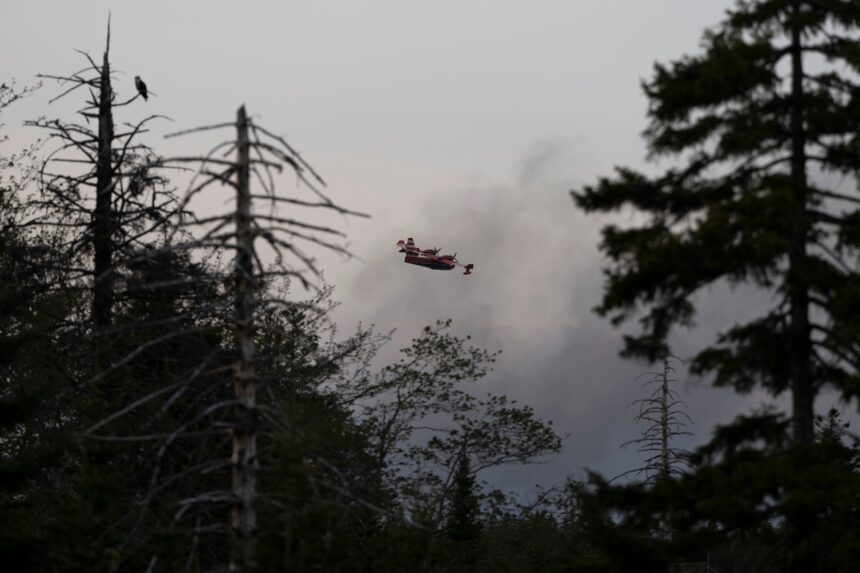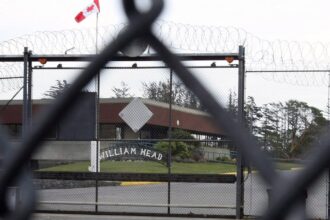In the scorched aftermath of Nova Scotia’s most devastating wildfire season on record, a troubling connection has emerged between industrial forestry practices and heightened climate vulnerability. The unprecedented fires that swept through the province this summer didn’t just destroy homes and displace communities—they exposed a decades-long forestry management approach that may have inadvertently created perfect conditions for disaster.
“What we’re seeing isn’t simply bad luck or an inevitable consequence of climate change,” explains Dr. Miranda Wilson, forest ecology researcher at Dalhousie University. “The conversion of Nova Scotia’s diverse Acadian forests into predominantly softwood plantations has fundamentally altered the landscape’s fire resilience.”
The numbers tell a sobering story. According to provincial data, over 65% of Nova Scotia’s harvestable forest has been transformed through clear-cutting and replanting practices that favor fast-growing softwood species like black spruce and balsam fir. These monoculture stands, while economically efficient for the pulp and paper industry, create unnaturally dense, even-aged forests that burn more intensely and spread flames more rapidly than their natural, mixed-species counterparts.
Climate scientist Dr. James Roberts from Environment Canada points to a dangerous feedback loop: “As we continue to lose our mixed Acadian forests, we’re simultaneously reducing one of our best natural climate buffers while creating landscapes more susceptible to catastrophic fire events.”
The economic calculations that once seemed straightforward now appear increasingly short-sighted. The CO24 Business analysis team estimates the total cost of this year’s wildfires—including firefighting expenses, property damage, evacuation costs, and lost tourism revenue—exceeds $450 million, dwarfing the annual $290 million contribution of the forestry sector to Nova Scotia’s economy.
Provincial officials have been reluctant to acknowledge the connection. When questioned about forestry practices at a recent press conference covered by CO24 Politics, Minister of Natural Resources William Thomas deflected, stating that “extreme weather conditions were the primary driver” of this year’s fires.
Yet documents obtained through freedom of information requests reveal internal ministry warnings dating back to 2019 that highlighted the increased fire risk associated with current forestry practices. These warnings appear to have been largely ignored in favor of maintaining harvest quotas for major industry players.
Community resistance has intensified following the fires. In Tantallon, where 151 homes were destroyed in May, residents have formed the Coalition for Forest Reform, demanding immediate changes to provincial forestry policies.
“We’ve lost everything because profit was prioritized over protection,” says coalition founder Sarah Macdonald, whose family home of three generations was reduced to ash. “We can’t rebuild the same way and expect different results.”
Indigenous leaders have been particularly vocal about returning to traditional forest management approaches. Mi’kmaq Elder Joseph Sylliboy emphasizes that “for thousands of years, we maintained these forests with controlled burns and selective harvesting. The wisdom we were forced to abandon is exactly what’s needed now.”
Climate models project that Nova Scotia will face increasingly hot, dry summers, with lightning strikes—the ignition source for many wildfires—expected to increase by up to 40% by 2050. Against this backdrop, the province stands at a critical crossroads.
A coalition of environmental organizations, forestry experts, and Canada News outlets is calling for a fundamental rethinking of forestry practices, including mandatory buffers of diverse, mixed-species stands around communities, reduced clear-cutting quotas, and incentives for selective harvesting methods that maintain forest diversity.
The Nova Scotia example serves as a warning for other provinces facing similar pressures. As covered extensively in CO24 News, British Columbia and Alberta have already begun reassessing their forestry practices in light of increasingly destructive fire seasons.
As communities rebuild and the province reflects on this summer of destruction, the question remains: will Nova Scotia learn from this catastrophe and embrace forestry practices that build climate resilience, or will short-term economic interests continue to create landscapes primed for disaster?










